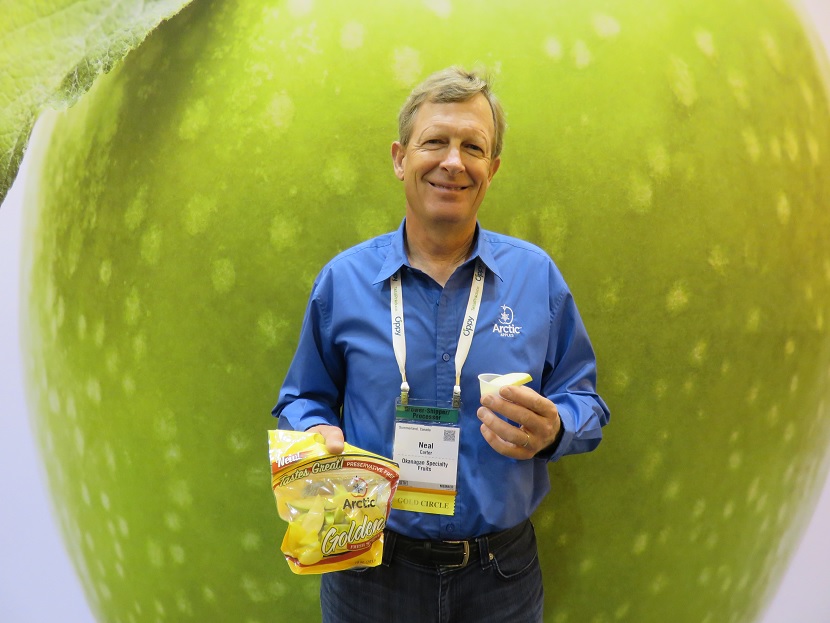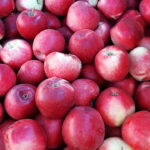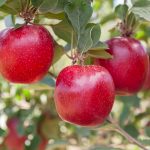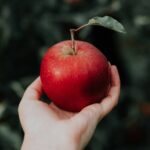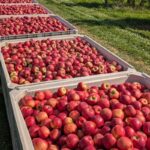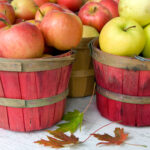North America: OSF to start first Arctic Apple commercial sales next week

"I think I’d be lying to say I wasn’t nervous. Of course I’m nervous, but I’m nervous for all the same reasons I’d be for the introduction of any new produce item," said Okanagan Specialty Fruits (OSF) founder Neal Carter.
Speaking with Fresh Fruit Portal during the Produce Marketing Association (PMA) Fresh Summit in New Orleans last week, Carter's response downplayed the launch of what could be a complete game-changer for sliced apples as we know them.
Following decades of scientific research and years of regulatory hoops to jump through, the Intrexon-owned Canadian company's non-browning apples - an effect caused by the silencing of the gene polyphenol oxidase (PPO) - have reached a sufficient volume to run at least a two-month season this year.
"The crop is fully harvested. We have 250 acres planted which is significant but most of them are young trees," Carter said.
"We only pick fruit from the trees that were planted in 2015, and we’ve got about 175,000 pounds of Arctic Goldens from that," he said.
"In the apple world that’s really not much crop – we picked it in two days," he said, adding post-harvest tests showed around 78% of the crop was suitable for slicing.
He expected the first Arctic Goldens would start to be seen in stores as of Nov. 1. In the meantime, his biggest concerns are around logistics, packaging issues and how the pallets will stand up in transport.
While some consumers will be suspicious of the genetically-modified fruit, OSF has the compelling argument that its fruit is preservative-free unlike so many sliced apples that are treated with chemical antioxidant calcium ascorbate.
"In fact the GM component of it is really down the list of my overall concerns; the product performs, we know that and we’re comfortable with the product," he said.
"The question is, will consumers like it? And every indication is yes. We have so many people asking where they could get it."
Carter said OSF was working with a few distributors that focus on regional retailers, predominantly in the U.S. Midwest.
"We have three distributors and then two retailers that do their own distributing that will put Arctic Goldens into a selection of their stores. It works out to be 390 stores total for 10-12 weeks," he said.
"So it’s going to be a fairly short and intense marketing window for us, but a long enough duration so that we can look at repeat sale metrics and performance metrics in stores.
"It’s a presence – November, December, maybe wrapping up January, but we may be done before Christmas; if the movement is good and we just keep slicing and shipping."
Arctic fruit, from apples to cherries
OSF's next crop in the pipeline is the Arctic Granny, a Granny Smith that has gone through the same process as the Arctic Golden.
Both varieties were approved by the U.S. Food and Drug Administration (FDA) and the United States Department of Agriculture (USDA) in 2015, followed by the Arctic Fuji last year which is still awaiting approval from Canadian authorities.
"The Grannys are really one year behind the Goldens – in the apple world you typically strip the fruit off young grees because you’re trying to build the tree, and then you crop it the next year," Carter said.
"So the only Grannys we have are really from trees that we stripped but we missed a bud. We have the odd Granny, enough to do some testing with but we’re not picking any Grannys this year for commercial sales.
"This is just the start...the focus is more Arctics off course," he said, adding the Arctic Gala was next in line after the Arctic Fuji.
But OSF's research isn't just in apples. Carter underscored the great potential for applying the same technology to pears and cherries.
"You can only imagine a blush type cherry or a Rainier cherry that didn’t get enzymatic browning; I don't know how familiar you are with cherries but you can just about look at it and it’ll go brown," he joked.
"For a grower it’s so frustrating to grow that variety - leaf rub, limb rub, wind."
He added the technology would also help keep the cherry stems green.
"When you pick cherries you pick stems, you don’t pick the fruit, and people don’t think about it but that green stem gets bruised," he said.
"Stems dry out, yes, but stems go brown because they’re bruised – so you take the PPO away and suddenly the stem lasts longer.
"And then of course there are other traits. We have some platform technology we’re developing now and that’s really coming along."
He said this involved what's known as "stacking traits" in tree fruits including non-browning and other aspects, including the "holy grail" of fire blight resistence.
"You look at companies like Monsanto and their smart stack and they’ve got 10-12 traits being manipulated in that product now," he said.
"Okay, we’re not them, we’re not quite as good as they are and tree fruits are harder to work with, but there’s going to be a day when we will be fixing a lot of the things that are impacting the crop from an environmental, production point of view as well as consumer-facing traits.
"Fire blight resistance is a huge one, and it’s really one of the drivers of the platform we’re working on right now.
"Fire blight being a bacteria, you’re going to have multiple strains of bacteria. It’s a hard nut to crack; you need a really robust intervention to make that work and so this platform is going to allow us to do that, to assess eight or 10 genes and combinations thereof and really something that takes us to a whole other level."













